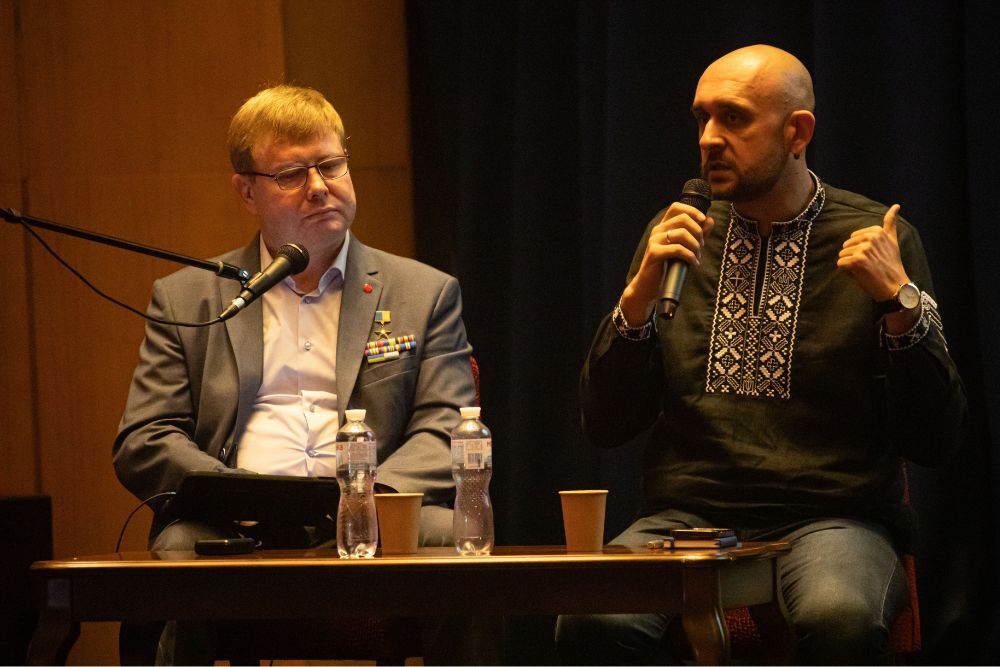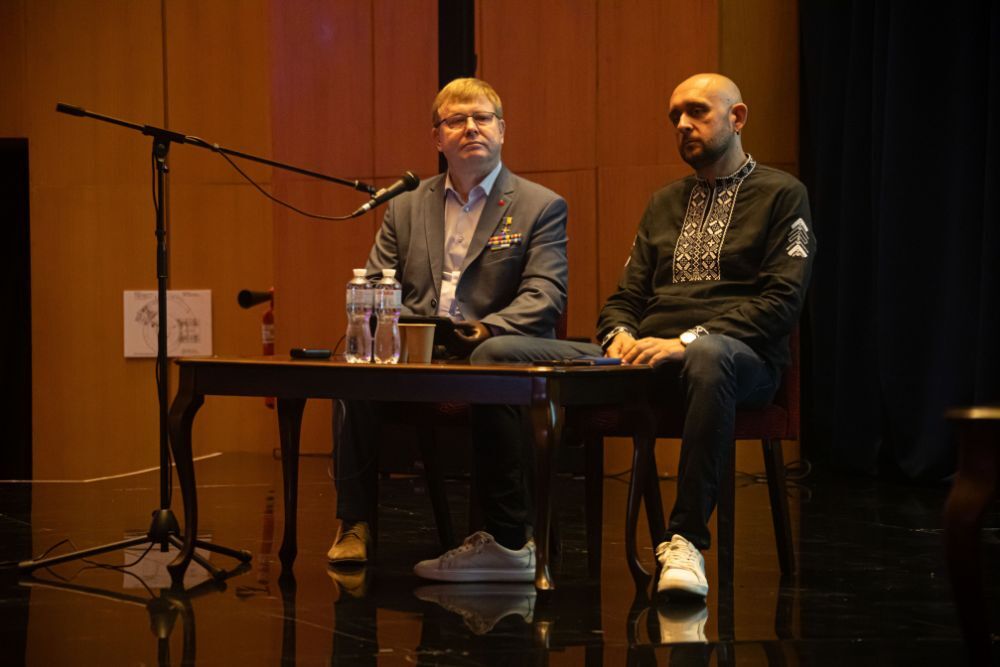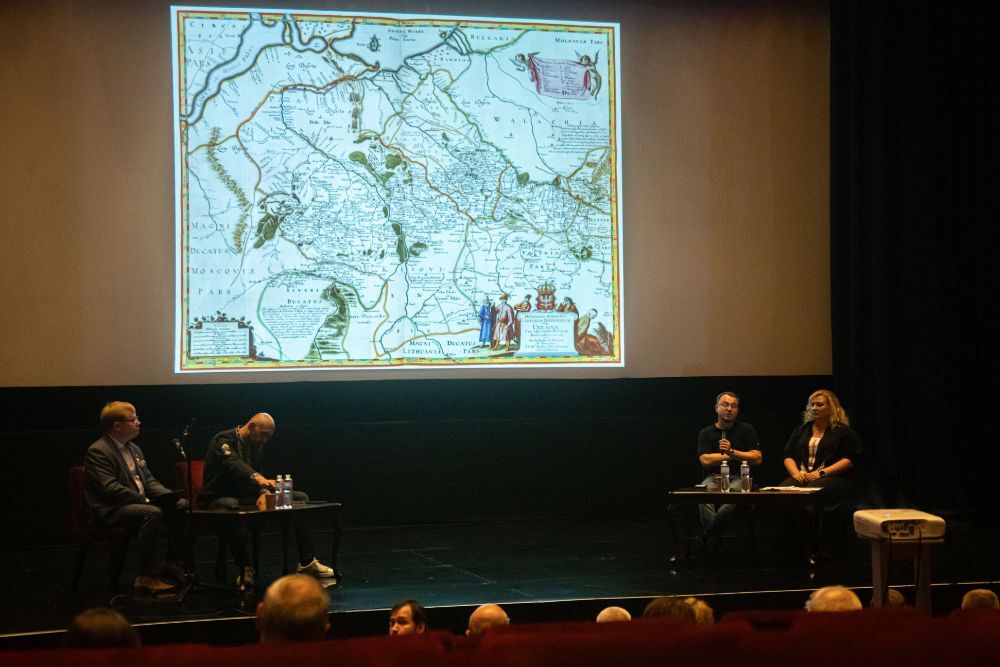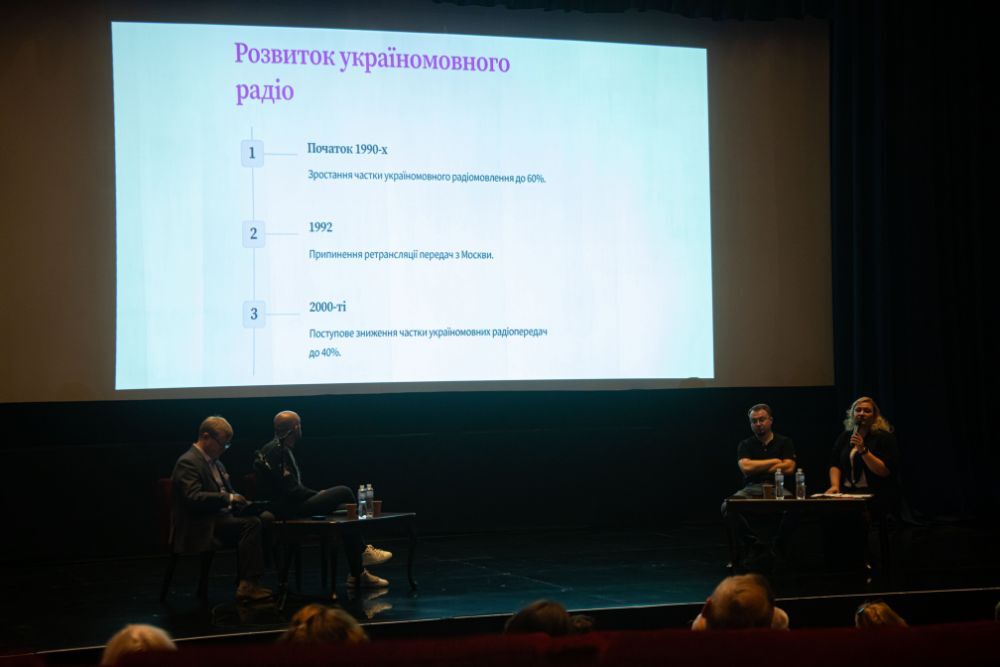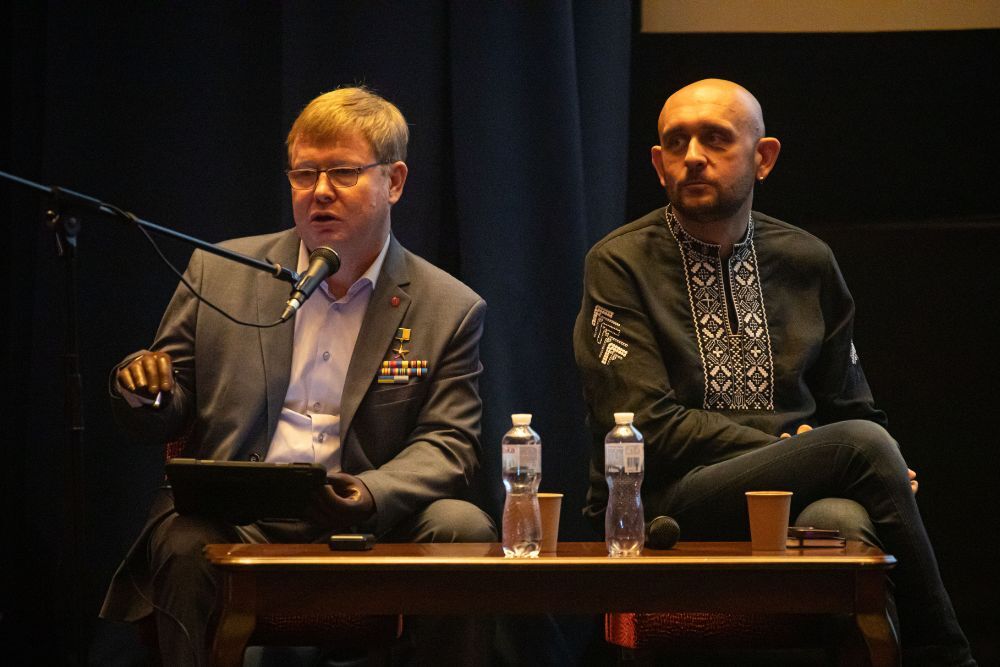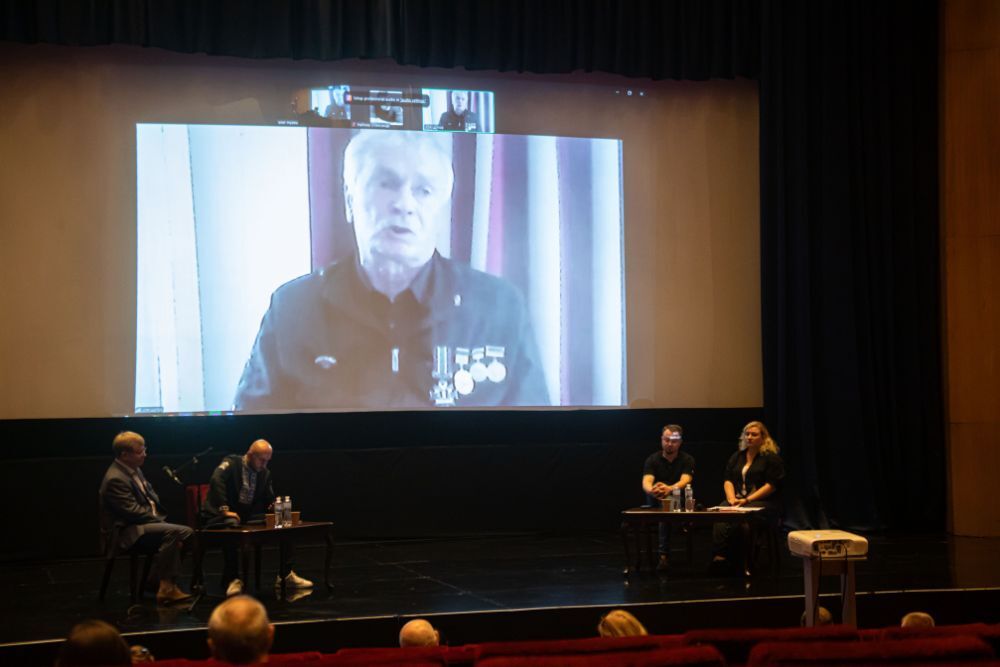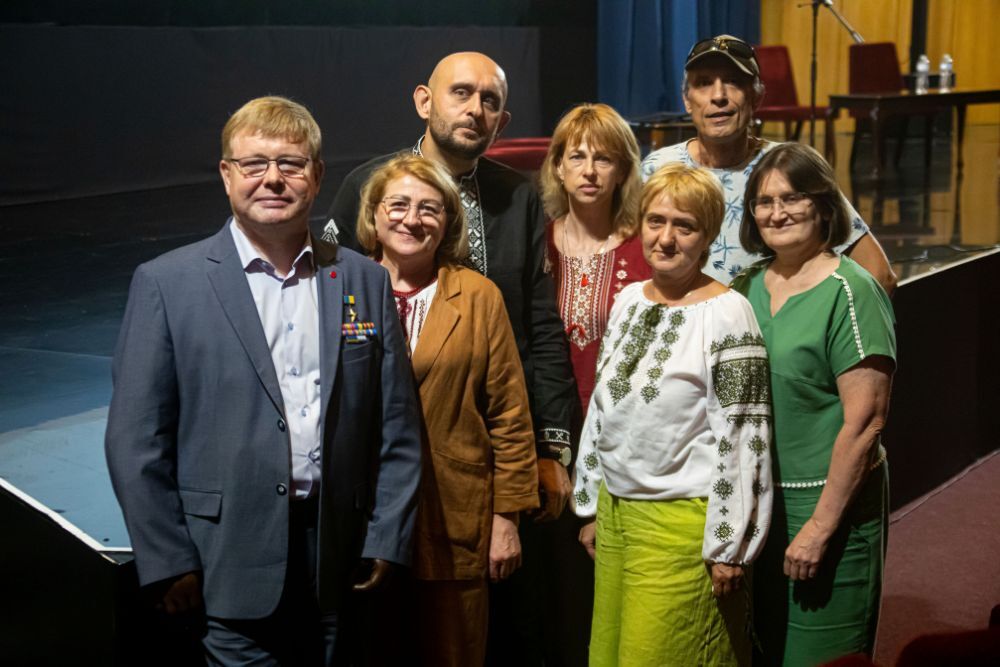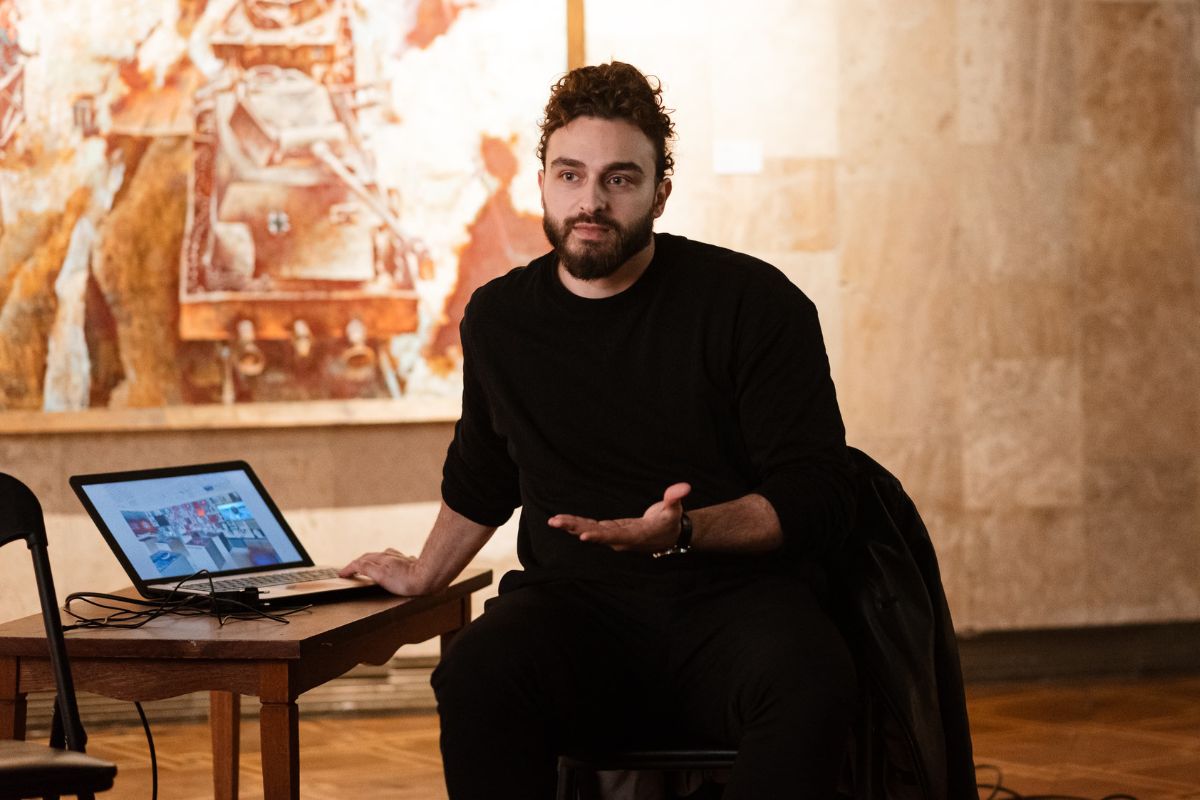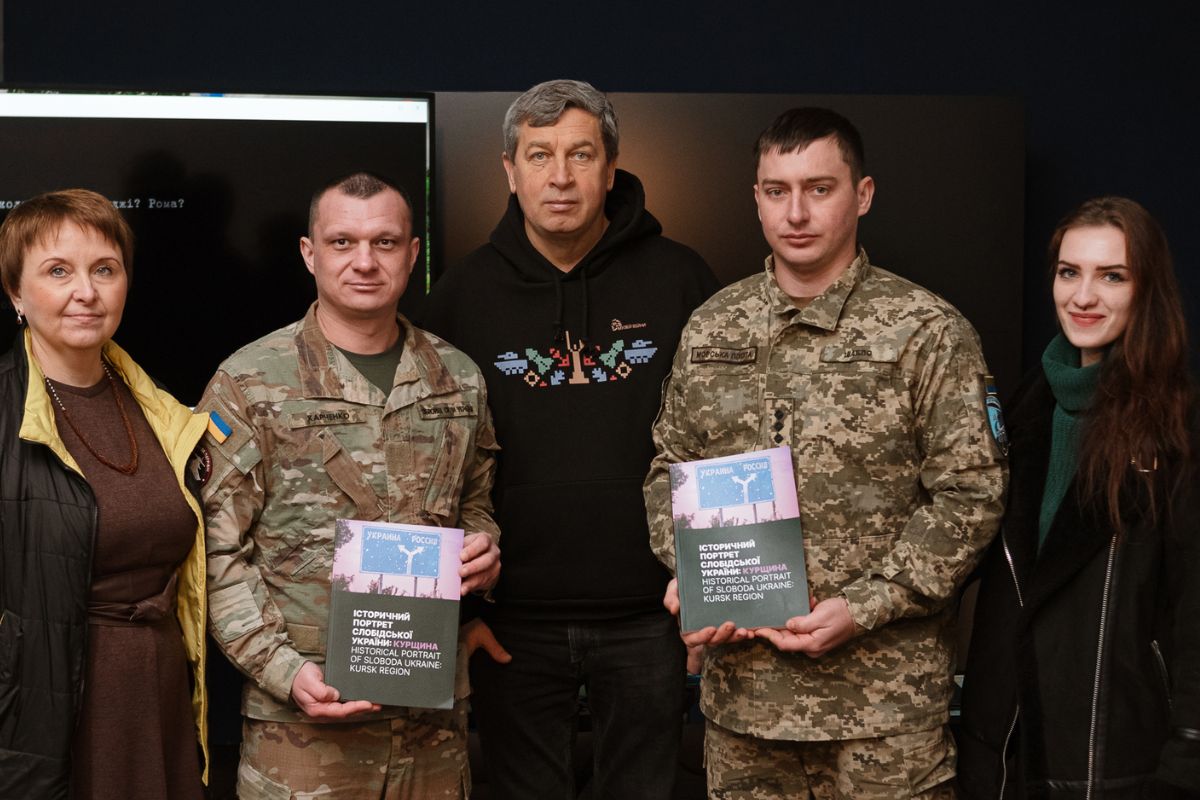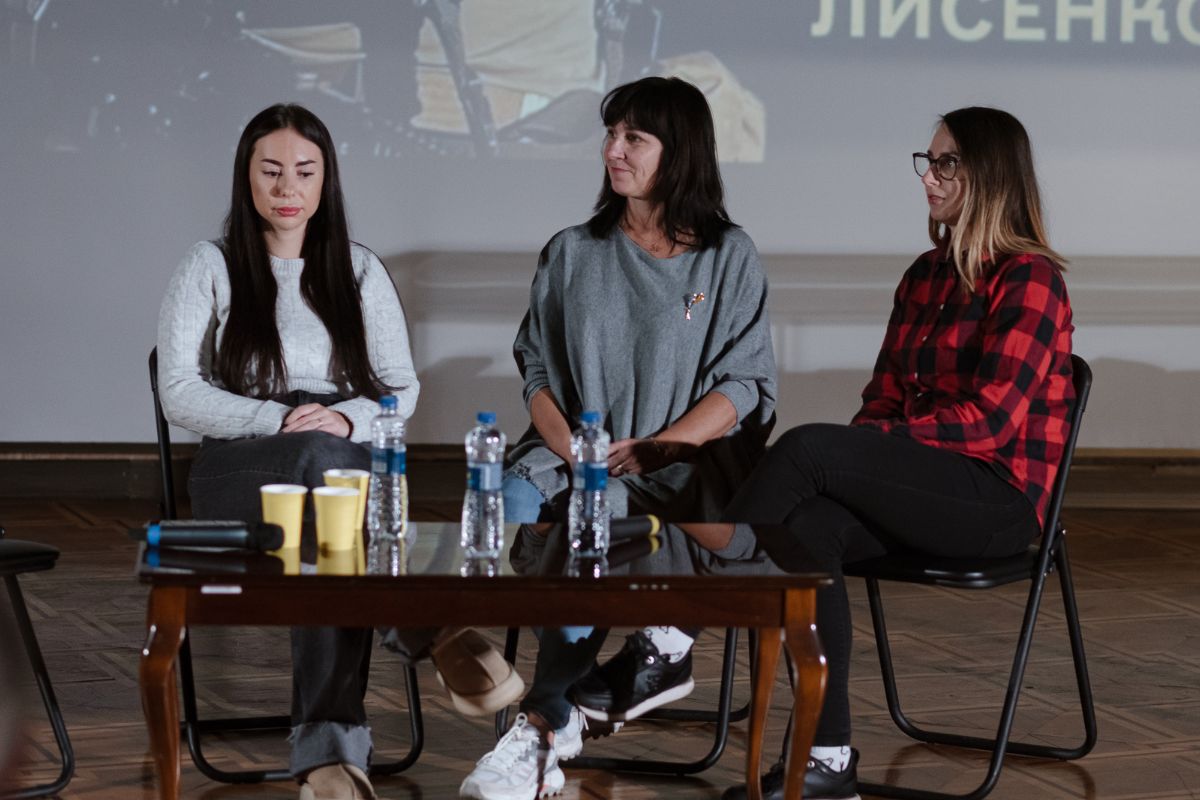On the occasion of the 33rd anniversary of our restored statehood, the Museum hosted the event “33 Years of Ukraine’s Independence through the Lens of Donbas.”
The moderators and guests discussed the region’s history and the processes and transformations of the last two decades. They shared their memories of the peaceful cities of Donetsk and Luhansk before the russian occupation.
Journalist Maksym Vikhrov and Oleksandr Naboka, who holds a Ph.D. in History, presented the history of the Wild Fields (Donbas from 1600 to 1917) and the Donetsk Basin in the Soviet period. Ilya Shutov, a journalist, an active participant in four revolutions in Ukraine, and a combatant, recalled the path of our people to the 1991 referendum and shared his experience of fighting for the country’s independence.
The moderator of the event, Tetyana Romanenko, a researcher of documents and sources on the history of Donbas, used them to demonstrate the region’s role in the industrialization of the USSR. In addition, a museum employee addressed the issue of russification of the population through the media and television by pro-Kremlin forces in independent Ukraine.
Stanislav Fedorchuk, Head of the Board of the Ukrainian People’s Council of Donetsk and Luhansk, a political scientist and veteran of the russian-Ukrainian war, commented on the Donetsk Euromaidan, emphasizing that historically, the majority of the population of the Donetsk region has never been pro-russian. Like the rest of Ukraine, the region has aimed for European integration rather than an alliance with moscow.
Volodymyr Zhemchugov, a museum employee and the event moderator, reminisced about his native Luhansk region during peacetime from the viewpoint of an ordinary resident. He observed that the region’s persistent russification was ongoing. However, every success of Ukraine in any field prompted a reaction from the local population and sparked an unintentional wave of Ukrainianization.
The Museum has brought attention to the Ukrainian East and debunked the myth of a “russian” population in the region. We appreciate the speakers for their detailed presentations, the audience for actively participating in the discussion, and for sharing their memories of their hometowns, which are now occupied by russia.
